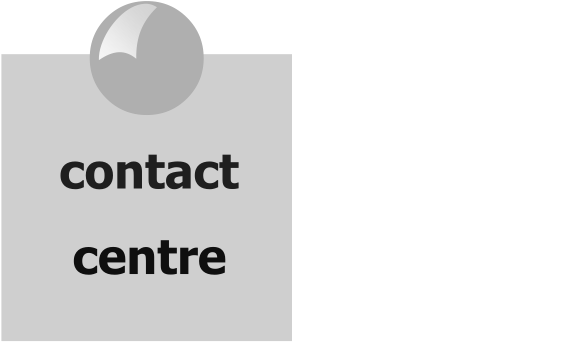The two-speed CIO just isn’t going to cut it – tech chiefs need to be able to respond to changing environments and requirements more quickly than ever.
The modern CIO must act like a professional chameleon, changing their form and their IT function to suit the fast-changing business environment.
Analyst Garter suggests CIOs are fully aware that they will need to change in order to succeed in digital business, with 75 per cent of IT leaders saying they will need to adapt their style and skills during the next three years. The analyst talks of the need for executives to adopt a bi-modal stance to IT.
Modern CIOs, suggests Gartner, need a rock solid and efficient IT operation that, frees up time and resources for innovation. So, does the idea of a bi-modal CIO resonate with IT leaders and how can technology chiefs change their style to suit business need?
Does bi-modal IT resonate with CIOs?
Former CIO and digital advisor Ian Cohen says the keys to success in the digital age, such as understanding product management, behaviour, and sentiment, often have very little to do with the traditional view of enterprise IT. In fact, Cohen says the often used description of a bi-modal IT is nonsense.
“I still hear people talking about the need to manage both the back and the front office as if they are two separate things and are all you need to consider,” he says. “If you understand the power of technology, you’ll know that IT has always been multi-modal. The best CIOs already have responsibility for a broad range of digital transformation projects as part of their portfolio of management skills.”
Gartner says as many as 89 per cent of CIOs believe that the digital world is creating new types and levels of risk for their business. What is, perhaps, more surprising is that 11 per cent of CIOs do not recognise the change. For such IT leaders, a wakeup call is surely required. And as Cohen suggests, that moment could be fast approaching.
“If you don’t have that focus, there’s a big risk that you won’t be a CIO for much longer,” he says. “Ultimately, digital needs to be everyone’s responsibility – no single executive can own the digital agenda. But someone has to be the catalyst for transformation and the best CIOs are agents of change. It’s not about being bi-modal, it about your organisation – and the technology that enables and supports business – being multi-modal.”
Research suggests technology chiefs do understand the importance of responsiveness. Consultant Deloitte reports that more than two fifths (41 per cent) of executives recognise the importance of an agile delivery model to mature IT organisations. There is, however, confusion about how this state might be reached — and Tullow Oil CIO Andrew Marks is another executive who believes the phrase bi-modal IT is nonsense.
“There’s a lot of talk about the evolution of the CIO role, but technology management is, and always has been, multi-speed,” he says. “While IT leadership does change over time, it’s impossible to say how the position will change in the future or how many years it might take to reach the next stage of leadership.”
Marks’ suggestion is that the act of being a CIO is directly related to the context of the business within which an individual operates. And there isn’t a “CIO to order”; your career could go in any direction, such as working in operations, working for a start-up, and then returning back to work in IT.
“I don’t think you need the badge of successfully transforming a business through IT to be considered for your next role,” he says. “If you’re not into running continuous change initiatives, you will still be involved in milestone events, yet these tend to be subtle changes, rather than complete organisational transformations.”
How can CIOs change their style and meet business need?
The modern CIO, therefore, needs to be a multi-modal chameleon. There is an almost limitless amount of variations in form and function of the role due to the different demands in host organisations. What is more, some CIOs will not necessarily find it easy to adopt the right stance.
Stephen Hand, former CIO and principal consultant at Consult 360, says a willingness to think differently – particularly in regards to innovation – can be a big ask for IT leaders. Unlike other c-suite peers, technology professionals are not necessarily used to thinking in new and radical ways.
“The IT professional’s longstanding focus on governance, strategy, and information means many technology executives have more in common with the finance chief than some of their more entrepreneurial executive peers, especially those in the marketing and sales departments,” says Hand.
But an insular style of leadership is simply not an option. As businesses look to gain a competitive advantage from digital transformation, engagement seems to be the watchword for IT leaders, who must continue to spend less time in the data centre and more time facing internal and external customers.
David Reed, head of information services and infrastructure at the Press Association, picks up on this point, suggesting that successful CIOs spend as much time as possible trying to understand how technology can make a positive impact to the overall business.
“IT must align with both internal and external business objectives,” he says, stating that stakeholder management is an absolutely critical success factor for modern CIOs. “If the technology you implement doesn’t do anything for the bottom line, it’s a waste of time, and will lead you down the path to failure.”
Engagement requires commitment on both sides. Such close working is engrained into the working culture at Top Right Group. The media firm’s IT director Sean Harley says the technology team supports the firm’s product managers that are delivering new services for customers. Many of the projects being delivered have a strong digital element.
“Customers today want social interaction and personalisation,” he says. “Does a dedicated CDO give you an advantage in those areas? It’s debatable, but what I do know is that a decent product manager who knows their sector – and who works hand in hand with the technology team – can deliver those benefits. And that’s what we see in our organisation.”


Recent Comments